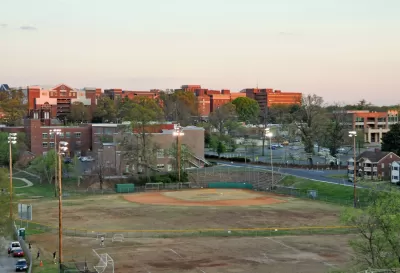Over the last decade and a half, the city has put millions of dollars into affordable housing. But the help is not reaching Charlotte’s neediest residents.

Affordable housing efforts are not bringing relief from rising housing costs for the lowest-income residents of Charlotte, North Carolina, reports Fred Clasen-Kelly and Julianna Rennie.
The city has already spent or earmarked $124 million, and a bond measure on next month’s ballot will ask voters to approve another $50 million. City officials have said that they are trying to help a wide swath of residents, in a city where starting salaries for professionals such as teachers and police officers are low and make it hard for people to handle housing costs.
“But unlike some other cities, Charlotte does not set aside a large portion of Housing Trust Fund money for people who have extremely low incomes. Places such as Pittsburgh, Detroit and Philadelphia have pledged that at least half of Housing Trust Fund money benefit their poorest residents,” say Clasen-Kelly and Rennie.
However, critics point to what they see as the Housing Trust Fund’s missteps, including a $5.6 million subsidy to a developer for a building with rents that will be out of reach for most very low-income residents and beds in homeless shelters being counted as affordable housing units.
City leaders, however, stand by their spending decisions and say they have helped people in Charlotte struggling with housing costs. “Mayor Vi Lyles said it is counter productive to debate who is the most deserving of government aid,” report Clasen-Kelly and Rennie.
FULL STORY: Charlotte spent millions on low-income housing, but poor people can’t afford it

Maui's Vacation Rental Debate Turns Ugly
Verbal attacks, misinformation campaigns and fistfights plague a high-stakes debate to convert thousands of vacation rentals into long-term housing.

Planetizen Federal Action Tracker
A weekly monitor of how Trump’s orders and actions are impacting planners and planning in America.

In Urban Planning, AI Prompting Could be the New Design Thinking
Creativity has long been key to great urban design. What if we see AI as our new creative partner?

Milwaukee Launches Vision Zero Plan
Seven years after the city signed its Complete Streets Policy, the city is doubling down on its efforts to eliminate traffic deaths.

Portland Raises Parking Fees to Pay for Street Maintenance
The city is struggling to bridge a massive budget gap at the Bureau of Transportation, which largely depleted its reserves during the Civd-19 pandemic.

Spokane Mayor Introduces Housing Reforms Package
Mayor Lisa Brown’s proposals include deferring or waiving some development fees to encourage more affordable housing development.
Urban Design for Planners 1: Software Tools
This six-course series explores essential urban design concepts using open source software and equips planners with the tools they need to participate fully in the urban design process.
Planning for Universal Design
Learn the tools for implementing Universal Design in planning regulations.
Gallatin County Department of Planning & Community Development
Heyer Gruel & Associates PA
JM Goldson LLC
City of Camden Redevelopment Agency
City of Astoria
Transportation Research & Education Center (TREC) at Portland State University
Jefferson Parish Government
Camden Redevelopment Agency
City of Claremont





























